About Wendell Estate Honey
The food you eat profoundly affects your health and well-being.
Knowing where your food comes from, what’s in it, and how it’s processed is a key component of healthy living.
Do you know what’s in your honey? We do.
Our Story
The Wendell family farm has been producing honey since John Wendell started keeping bees in the 1930s. For decades we reserved the season’s best honey to sell to dedicated local customers that would visit our farm to stock up on fresh raw honey. In 2011 Tim and Isabel Wendell launched the Wendell Estate brand so that customers around the world who lack access to a trusted local beekeeper could enjoy natural, raw honey. We are passionate about our honey and invite you to enjoy our finest, it might just change the way you think about honey.
We remain a small, family-run honey farm. We raise our own bees, harvest our own honey, and package it fresh on our farm.
In 2024 the Canadian Honey Council awarded Wendell Estate Honey founder and owner, Tim Wendell, the prestigious Fred Rathje Memorial Award for “outstanding contributions to Canadian beekeeping”.
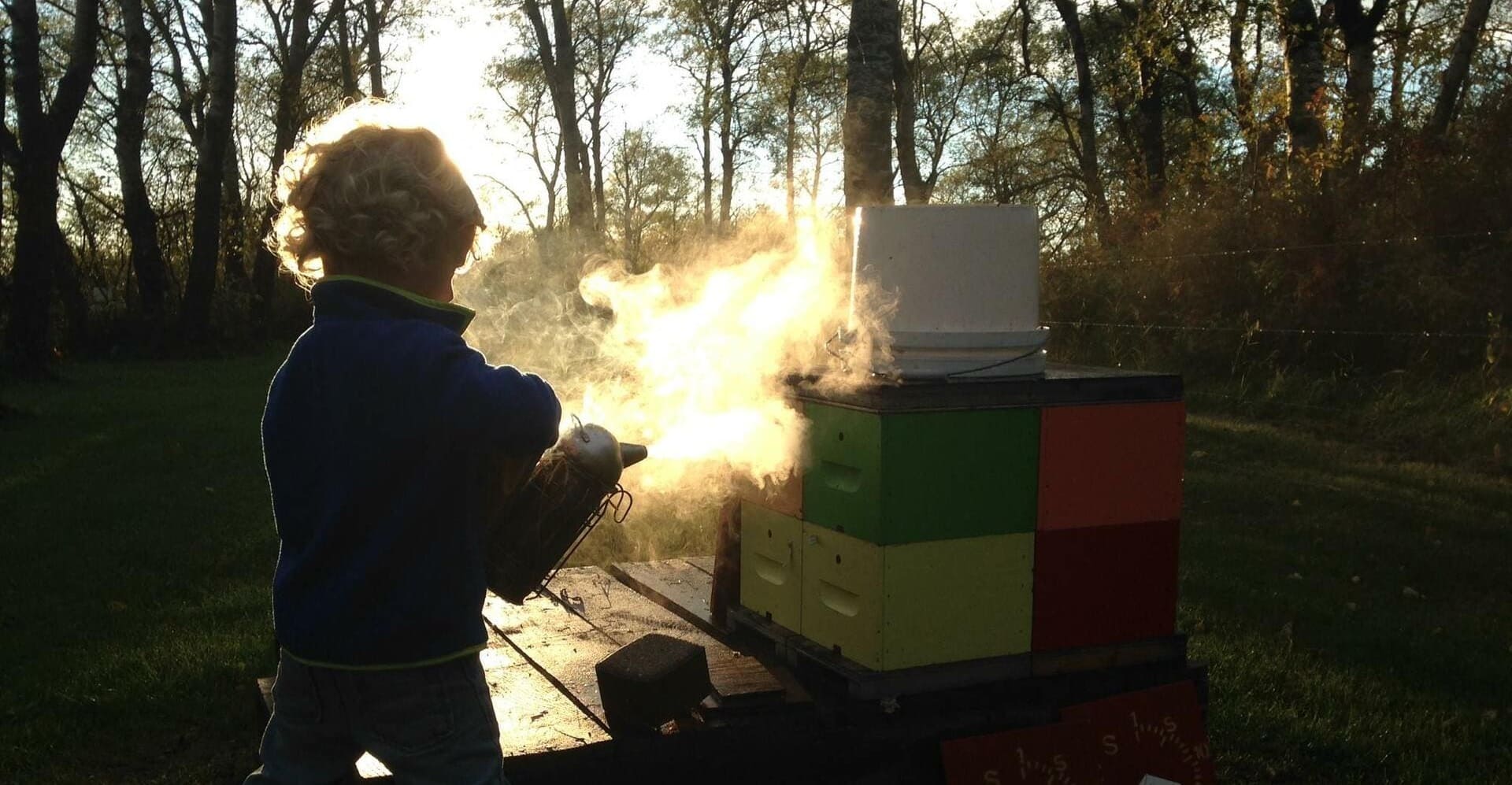
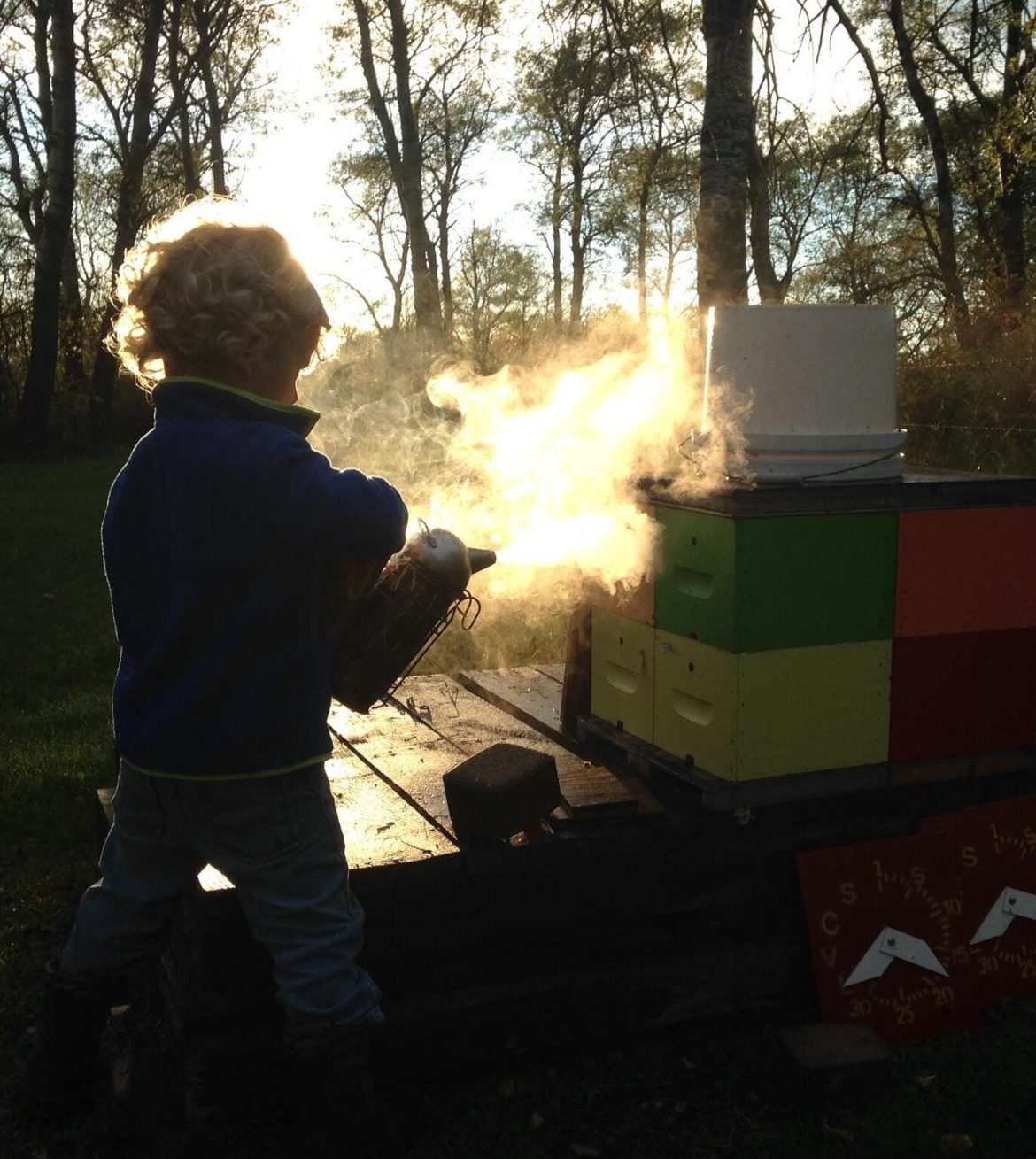
What Kind of Food Do You Want to Eat?
We encourage people to ask themselves this question: Would you rather get mass-produced food from a large food packaging and marketing company, or pure, natural food direct from the producer?
Many honey companies buy bulk honey from producers like us, blend it, at times with inferior honey, and then market their brand as if they were the beekeeper, sometimes calling it “raw” even though it almost always needs to be heated to get it from the bulk drum to the retail jar.
Wendell Estate Honey is different.
Choosing the Finest Honey Our Bees Produce and then Packaging it Fresh on the Farm Results in a Honey that is:

RAW
Unheated. Unfiltered. Contains all the proteins, minerals, vitamins and natural enzymes that provide anti-oxidant, anti-bacterial, anti-viral and anti-fungal properties of natural honey.

PURE
Nothing added.
Nothing removed.
Direct from our bees to your table.

AUTHENTIC
100% Natural prairie blossom honey from our own apiaries. And nothing else.
Never blended.
Never batched.
Wendell Estate Honey delights the senses: Striking white honey in an elegant glass jar. Fresh floral aromas. Unparalleled buttery-smooth texture. Initial tartness melts into delicate sweetness.
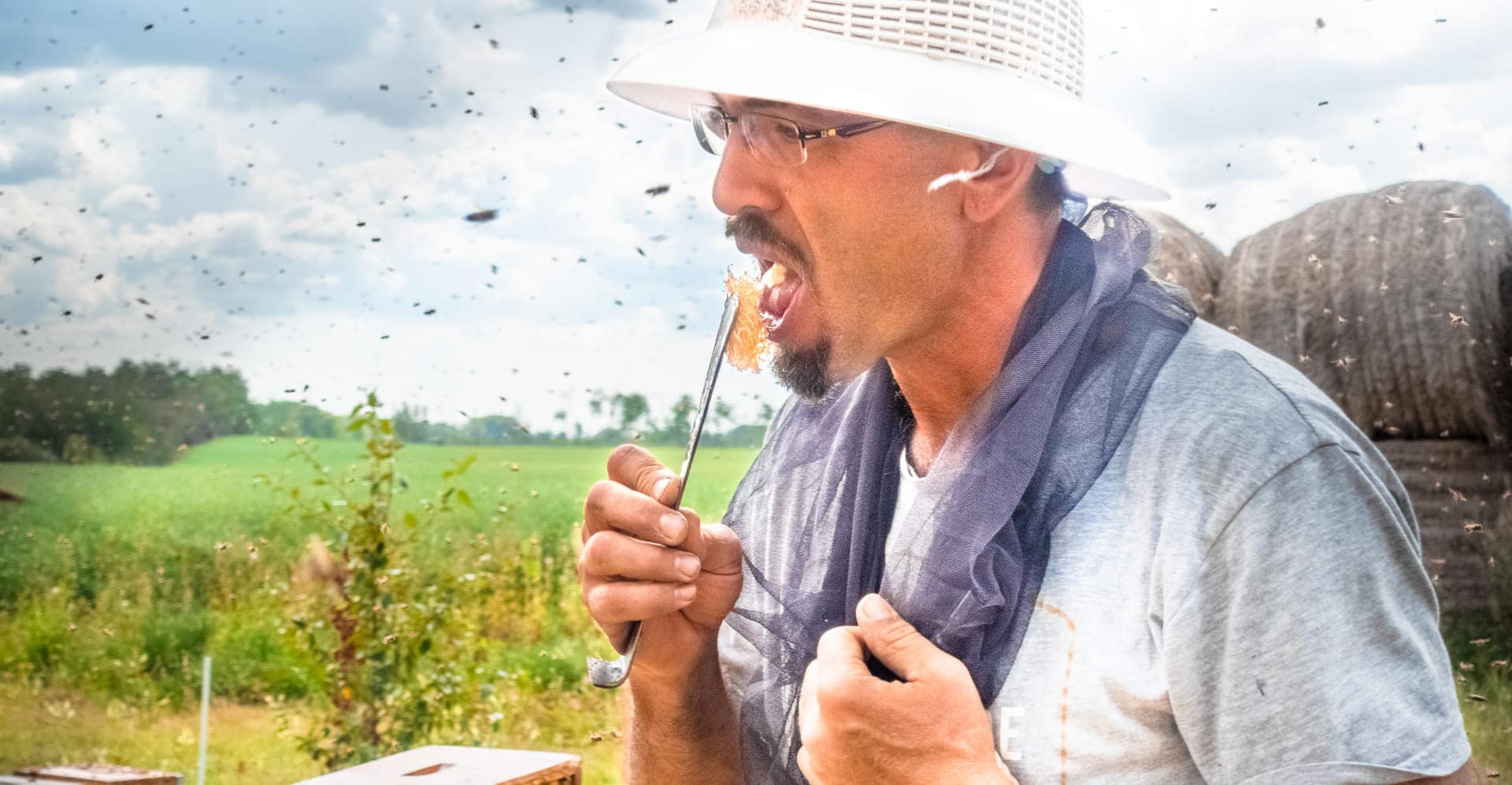
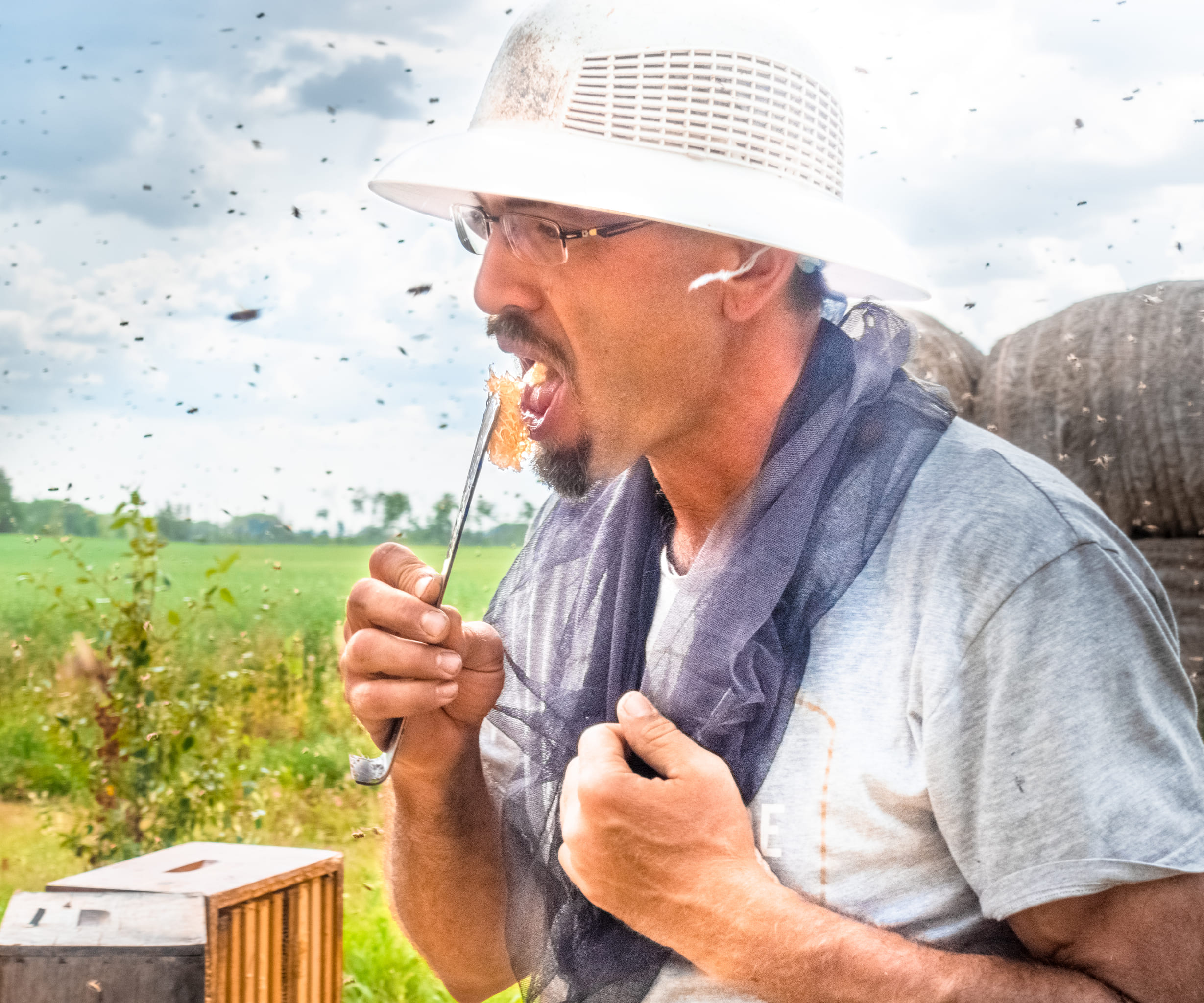
How Wendell Estate Honey is Unique
Our farm produces a large volume of honey for a small farm, accounting for 1-2% of Canada’s annual national honey production. Only the finest of this honey is carefully chosen for our Wendell Estate jars. The remainder we sell in bulk, with the vast majority of it fetching premium prices on the commodity market as “Canada No. 1” honey. Wendell Estate Honey’s multiple prestigious international awards and all the glowing customer reviews testify to the unique quality of our raw honey.
Most brands source their honey from producers just like us. The honey usually sits for weeks, months, or even years in the bulk drum before being heated to transfer it from the bulk drum to the retail jar. It is often pasteurized and ultrafiltered at this time, removing or destroying many of the components of raw honey that make it so healthy. Simply sitting at ambient temperatures for months (as most honey does before packaging, and then, again in the warehouse after packaging, and then again after arriving at the retail outlet) slowly degrades the raw honey’s quality, flavor and health properties.
The day after our honey is harvested from the bee yards, we spin it from the honeycombs by centrifuges (sometimes the second day if the honey extracting crew falls behind during the harvest rush). When we extract honey that meets our quality standards for Wendell Estate, it is diverted from the bulk drum packaging line into the retail jar packaging line. This means that the honey is packaged within hours of being in the beehive and never sees the inside of a bulk drum. We don’t filter the honey, so the bee pollen and bee propolis naturally found in honey remains in the honey (we do strain out larger pieces of wax).
After our honey sets into its signature silky-smooth soft-set form (“creamed honey”), we spare no expense keeping it fresh for the rest of the year by keeping it in cold storage. When you buy directly from us, we guarantee that you will receive absolutely raw honey that’s fresher than anything you can get without visiting a beekeeper in harvest season.
We make much effort to work with our offline retailers to educate them about the importance of proper storage of our premium raw honey, ensuring that our honey doesn’t end up languishing in a room temperature retailer storage for many months before being put on the shelf to be purchased by a customer.
Honey is the 3rd most adulterated food in the world . Un-knowledgeable or careless beekeepers can inadvertently harvest honey that contains sugar syrup. More commonly it’s unscrupulous honey packagers (and sometimes producers) that intentionally add cheaper syrups of processes sugars to their honey to increase profits while lowering sales price. Food Safety News reported back in 2011 that “Tests Show Most Store Honey Isn’t Honey”. In the years since, this trend has shown no signs of slowing, and may even be increasing based on the many reports from around the world finding shocking amounts of adulterated honey on store shelves. Here’s just one example of a more recent article from a respected newspaper in Europe.
Every drop of Wendell Estate Honey is harvested from our own bees. We know the entire history of each of our honeybee colonies and all the beekeeping practices that we have employed in our honeybee colony health management. Because we package the honey ourselves on the farm, from bee to bottle there’s no way a 3rd party can introduce sugar syrup or other adulterants or contaminants into our premium quality raw honey.
We inhabit the same environment that our bees do. We live in rural Canada and have a strong appreciation for the nature that surrounds us. As rural agriculturalists and nature lovers we have observed first-hand the environmental degradation and, more recently, the effects of climate change on our natural environment and the birds and animals that inhabit it. Over the decades we have implemented many beekeeping techniques aimed at protecting the environment where our bees live.
We are the beekeepers, and we work hard to keep our bees healthy. Profits from Wendell Estate Honey support our farm and the beekeepers that work there. Most of the profit beyond that eventually goes back into our local rural communities where we live and work.
Wendell Estate Honey and Wendell Honey farm support local businesses and often support local charities and fundraisers. We operate the Village of MacNutt, SK Post Office at a financial loss to keep postal service in our community.
Wendell Estate owner and founder, Tim Wendell, has been recognized by the Canadian Honey Council for a lifetime of dedication to improving sustainable beekeeping in Canada.
Like most honey from the Canadian prairies, our honey is what is often called creamed honey, but we prefer the term “soft-set honey”, as this post explains. This means that the raw honey has been allowed to crystallize or granulate under controlled conditions before we sell it. For those unfamiliar with creamed honey, it’s a semi-solid product, somewhat similar in consistency to butter. Like butter, it’s softer at warmer temperatures and firmer at cooler temperatures. It can easily be gently warmed to soften it or even melt it into a liquid (however, be warned that it will eventually crystallize again at room temperature, and not in the original soft, silky-smooth state). One advantage of soft-set honey is that you can maintain freshness for many months by keeping it in the refrigerator, or indefinitely by freezing it. See our storage instructions for a detailed explanation.
The white color of our honey is noticed by many. This is completely natural: we do nothing to alter the color of our honey (other than allow it to crystallize). The white color also acts as a built-in natural freshness indicator (honey darkens as it ages – we’ve got a post on this too). Natural honey comes in a wide variety of colors. We prefer the mild, subtle flavors that accompany our lightest-colored prairie blossom honey so that’s what we package for retail. One important reason why our honey is so white is that we take great care not to let the honey darken, as honey usually darkens as a result of processes, like aging, that degrade the honey.
The best way to appreciate the uniqueness of our honey is to taste it. We invite you to try it and compare our unique honey with any other of your favorite honeys (or other sweet condiments or energy-boosting foods). We’re confident you’ll understand why our honey is a honey competition favorite.
"[The] ability to go right to the source of where the food comes from, to me, has always made the most amount of sense. The shorter the journey from the producer to the plate, is always going to be the best-tasting product.”
Master Chef Michael Allemeier
"[The] ability to go right to the source of where the food comes from, to me, has always made the most amount of sense. The shorter the distance from the producer to the plate, is always going to be the best-tasting product.”
Master Chef Michael Allemeier
The Flowers
Like most honeys, our honey is multi-floral: the bees forage a variety of flowers to make the honey. Larger brands often refer to their blend of multifloral honey from multiple honey producers as “wildflower” honey, a term we think is used very loosely, as the vast majority of honey harvested in North America will contain significant amounts of honey sourced from cultivated flowers. Summers are short, but intense on the Canadian prairies. Many different kinds of flowers explode into blossom at once. Honey bees fly up to 5 km (3 miles) or even further foraging nectar. Rather than claim a specific floral source, we acknowledge that the bees have foraged far and wide for to gather nectar. We choose our honey based on the characteristics of the resulting honey. Here, on the Canadian prairies, the nectar-foraging season starts with silver willow blossoms, carrying on through the dandelion peak into various wildflowers, flowering agricultural crops, garden flowers, tapering into autumn with late-blossom hay. Wendell Estate honey will contain a honey made from various mid-summer Northern prairie blossom including clover, alfalfa and canola as well as an assortment of prairie wildflower and garden-flower honey, and possibly with other cultivated agricultural flowering crops such as borage, mustard, saskatoon berry blossom, coriander and others. While we cannot specify with great confidence which flowers will have contributed to the honey in any given jar of Wendell Estate Honey (clover and/or alfalfa are nearly a certainty), we can guarantee that every jar contains unadulterated pure fresh raw honey harvested from our own beehives and from prairie blossom floral sources.
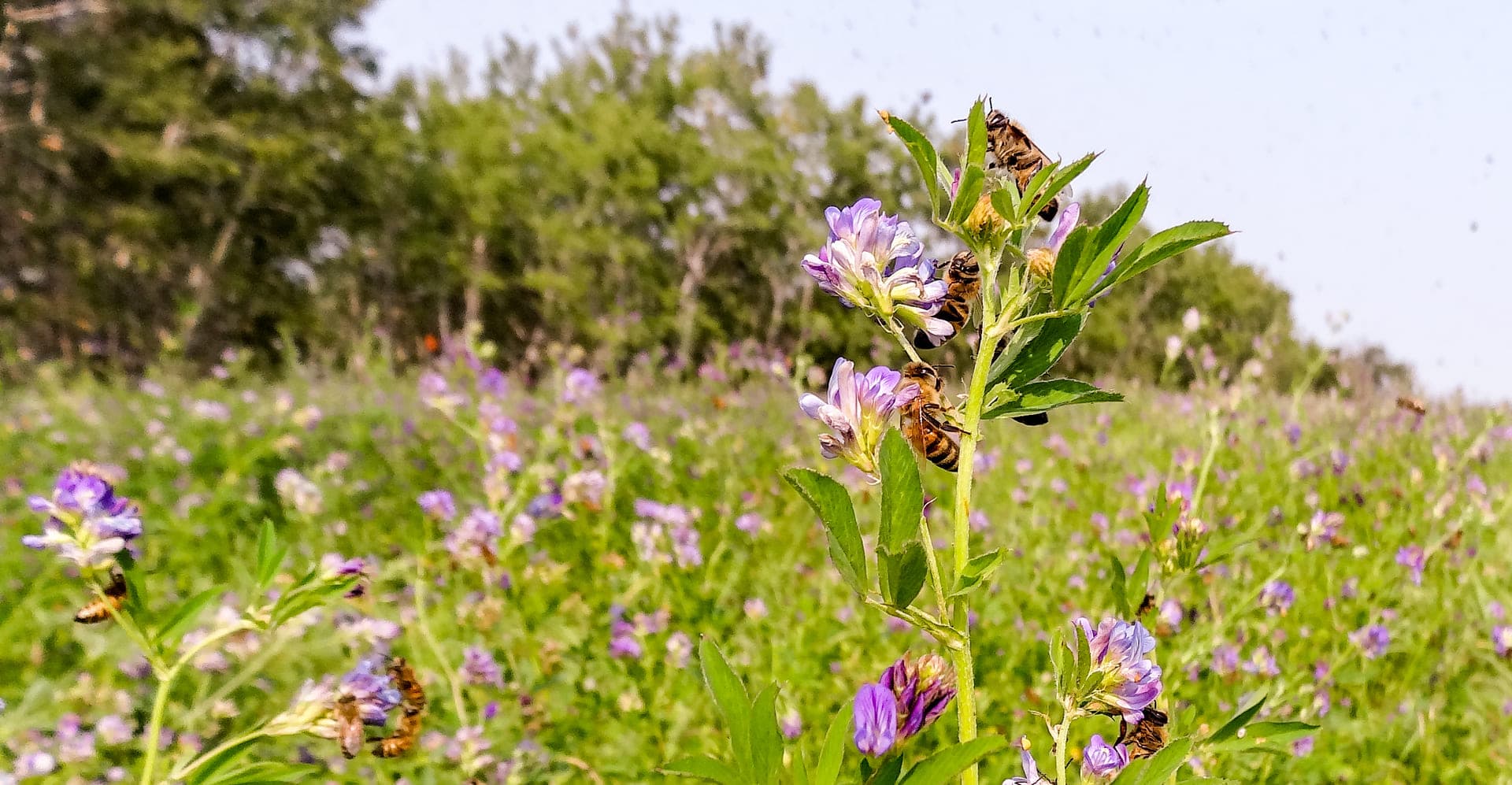
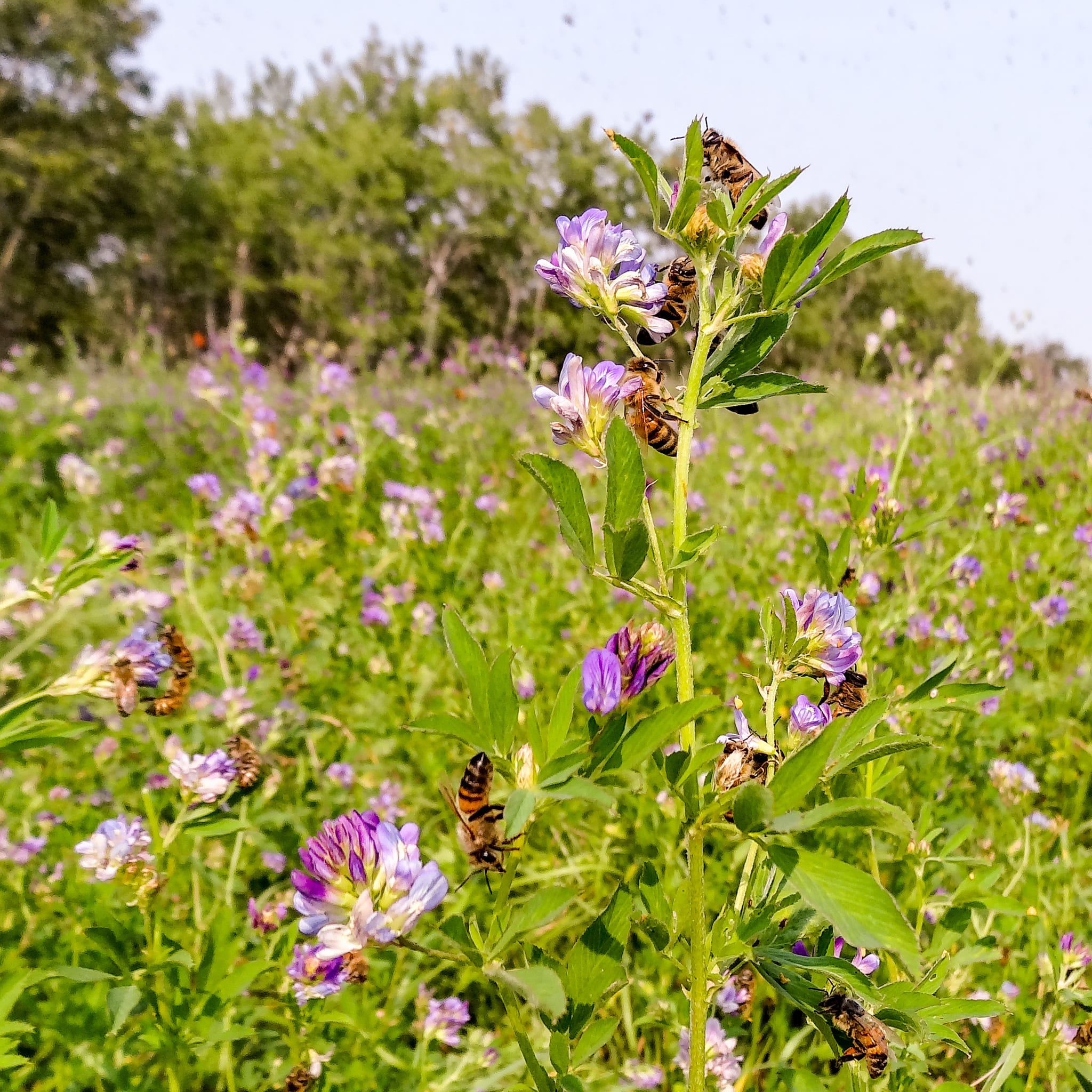
Our Mission Statement
To provide a raw, unprocessed, sustainably-produced food while promoting real, natural foods as a key component of healthy living.
To respect the value of the agricultural product we produce and the environment that supports it while spearheading efforts in promoting raw Canadian honey as a premium product around the world.
To be fully transparent and accountable to our customers, our business partners, and our employees.
